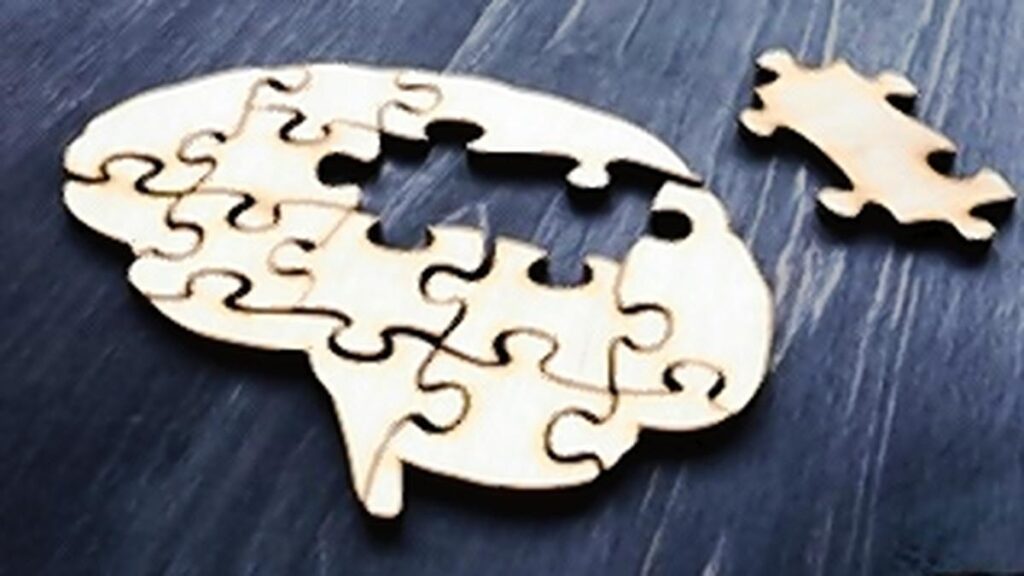
Each section or lobe of the brain is responsible for different functions, some of which are involved in communication. Whether and how a brain tumour affects a person depends on where it is located in the brain. Photograph used for representational purposes only
| Photo Credit: istock.com/designer491
Language is central to how we think, relate and exist in the world. Speech involves the ability to use movements of the tongue, lips, jaw muscles and vocal tract to produce sounds. Aphasia (sometimes called dysphasia) is a broad-spectrum acquired language disorder, affecting a person’s ability to process, use and/or understand language. It can affect all forms of language – speaking, listening, reading, and writing. Aphasia can cause frustration and stress for an individual living with it, as well as for their caregiver. Research indicates that about 30 percent of patients who undergo brain tumour surgery in the language-dominant hemisphere (typically the left side) develop some form of aphasia. Yet, despite its prevalence and impact, aphasia remains an under-addressed concern in post-operative care across India.

Aphasia can vary from mild degrees wherein there is trouble understanding long messages and needing a little extra time to understand and respond to spoken messages and difficulty finding words to express or explain an idea, to severe degrees in which there is little to no ability to speak, read or write or the use of a combination of words and jargon that is not understood by others and being unaware of own errors.
What tumours do to the brain’s language functions
Whether and how a brain tumour affects a person depends on where it is located in the brain. Each section or lobe of the brain is responsible for different functions, some of which are involved in communication. For example, the frontal lobe is involved in language production (how we express ourselves) and the temporal lobe in understanding what others are saying to us and how our thought processes work. As a result, pressure from a tumour in one of these areas of the brain can affect the ability to speak and understand what others are saying. Areas of the brain controlling language are generally found in the left hemisphere, so if this is where the tumour is, a person is more likely to experience language and speech difficulties. However, in some cases the speech centre is found in the right hemisphere, especially with left-handed people.
Because our brains are responsible for controlling the muscles needed to produce speech too, a brain tumour can also cause difficulty speaking by interrupting some signals being sent to the mouth – dysarthria.

Brain tumours can either be benign (non-cancerous) or malignant (cancerous). A tumour can cause aphasia if it impacts the brain’s language centers.
Aphasia due to cancer is called neoplastic aphasia. The most common type of aphasia due to brain tumour is anomic aphasia.
Aphasia due to brain tumours is more likely to be short-term and milder than post-stroke aphasia. The outcome and prognosis for cancer-related aphasias is dependent on the success of the medical treatment. If the tumour is treated successfully, the aphasia is likely to resolve.
Types of aphasia
In expressive aphasia, a patient has difficulties speaking or finding the right word. With receptive aphasia, there is difficulty understanding spoken language or written words. Global aphasia on the other hand is a severe form of aphasia affecting both speech production and language comprehension

Why early therapy matters
Slow-growing brain tumours in the left cerebral hemisphere can impact the brain. For patients recovering from brain tumour surgery, this vital faculty is sometimes the most painful loss. Timely and individualised speech therapy plays a critical role in helping the brain reorganise and compensate for lost function — a process known as neuroplasticity. This could mean that if the tumour is impacting a language center, the brain can shift language processing to another part of the brain. The first three to six months after surgery are a golden window for recovery. There are dozens of ways that speech-language pathologists (SLPs) treat aphasia. The type of treatment a person receives is generally determined by the type of aphasia he or she has, as well as the severity of it. However, it can also be guided by the need of individual patients and their families as it relates to activities of daily living.
Giving voice to recovery
Integrating speech therapy into standard post-operative protocols; strengthening workforce and training; harnessing tele therapy and digital health tools; supporting families and caregivers and including rehabilitation under insurance and public health schemes are some steps that can be taken, going forward.
Aphasia doesn’t kill, but it can erase identity, self-worth, and connection. In a society where verbal communication dominates, losing language means losing participation. Yet, with appropriate therapy and support many patients make remarkable recoveries. The challenge is not healthcare possibility, but access and awareness.
The time has come to treat rehabilitation as essential, not optional. I advocate a multidisciplinary, integrated approach to neuro-rehabilitation and particularly speech therapy. Speech-language therapy should be initiated during inpatient recovery for at-risk patients, and continued via outpatient or tele-rehabilitation pathways. In India’s expanding neurosurgical landscape, we cannot afford to let patients survive surgery only to live in silence. They deserve more than survival; they deserve to be heard.
(Dr. Sathyanarayana L.D. is a consultant neurosurgeon at Narayana Health, Bengaluru. Email: [email protected])
Published – June 11, 2025 12:00 pm IST

